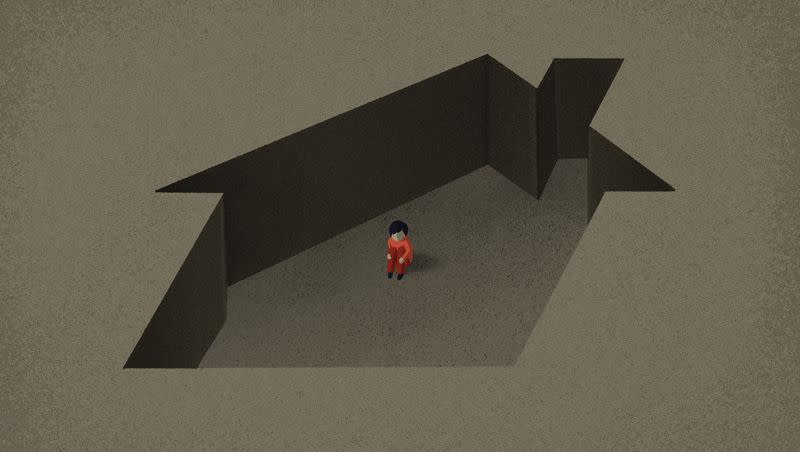Perspective: The best place for kids isn’t always their home

If it’s true that you can judge a society by how it treats its weakest members, then one shortcut to judging societies would be looking at their child welfare systems.
A recent article in The New Yorker by Margaret Talbot gives readers a chilling view into Austria’s foster care system in the post-war years. The story revolves around a woman, Evy Mages, who recalls growing up in a foster home in the 1960s after her mother abandons her. When the foster mother tired of her, Evy spent several months at what was called a “child observation station,” but was in actuality a psychiatric facility run by a sadistic psychologist at the University of Innsbruck named Maria Nowak-Vogl.
Nowak-Vogl and her underlings tried experimental drugs on the children whom they viewed as degenerates:
“At night, (Evy) had to sleep with a blanket pulled tight under her armpits, her arms ramrod straight by her sides, to insure that her hands couldn’t wander. She was terrified of wetting the bed, because whenever she did the white coats would awaken her, even from deep sleep, and march her to the bathroom for an ice-cold shower; she would then have to stand in a corner for the rest of the night. She’d be shivering and it would be dark, except for the murky green light from a fish tank, which she was forbidden to look at.”
Nowak-Vogl, Talbot argues, was heavily influenced by Nazi ideology. Rather than ridding Nazism from the country after the war, Austrians allowed it to fester. “If anything, Nazi psychiatrists, including those who sanctioned the murder of children, found themselves in a privileged position after the war” because many leaders in medical fields were Jews who had fled or been killed.
It is hardly surprising that an ideology that was left to fester in Austria for decades made its way into the child welfare system and remained there for years even after the country wanted to move on. Children like Evy have no voice. They don’t have anyone to speak on their behalf. And while professionals in other fields might face scrutiny from political or academic leaders, child welfare tends to go under the radar.
Discerning the ideology guiding child welfare in the U.S. is more difficult because we are a big country and the pendulum swings back and forth. The commonly held understanding is that during the crack epidemic, the U.S. took too many kids away from their homes because of their parents’ drug use. The warnings about so-called “crack babies” were overblown, according to this narrative, and we needlessly broke up (disproportionately Black) families, perhaps causing them more trauma than the epidemic itself.
Related
A cover story in The Atlantic should cast some doubt on this narrative. In “I Never Called Her Momma,” Jenisha Watts describes growing up with Trina, her drug-addicted mother in Kentucky. Watts and her four younger siblings were regularly left alone and without food. Each child had a different father but none of them were present. Watts’ home was regularly visited by police who found evidence of drug use as well as guns in the home.
“I knew other people who used drugs, but what happened at our apartment was different. On any given day, folks would be in the bathroom or a bedroom getting high. In return, the dealers gave Trina free drugs. Our door was always opening and shutting, strangers entering and leaving.”
At one point when she was in third grade, a man in the house asked Jenisha: “Do you want me to make you feel good?” Watts says, “I knew that wasn’t something a grown man should say to a child.”
It seems that all the adults around her — father, grandmother, neighbors, friends and authorities — knew that something was going terribly wrong in her home. And nothing was done.
After years of this, the state finally removed Jenisha’s siblings into foster care for a brief stint and she went to live with her aunt. They all spent time with Watts’ grandmother and then went back again to their mother, who began using drugs again, dropped her kids off with a neighbor, and then never returned to pick them up.
Watts’ article is not about the child welfare system per se. And she doesn’t have much to say about the decisions made by officials and her relatives about who should care for her. But it seems that all the adults around her — father, grandmother, neighbors, friends and authorities — knew that something was going terribly wrong in her home. And nothing was done.
Was it incompetence or laziness, or was it a reflection of how our nation has come to view vulnerable children? More and more, it seems that removing children from their families is seen as the worst outcome, worse than leaving them in abusive or neglectful homes. “Children belong with their families” is the refrain from political leaders and advocates. Our liberalized attitudes toward drug use — that using drugs is a decision adults can make without any collateral damage — is also evident in the way we deal with these kids. Unless they are being beaten, it seems, authorities think they will be fine.
Jenisha mentions early in the article that her mother never hit her. But neglecting her and her siblings, and letting strangers have access to them (something it seems both her mother and grandmother may have been guilty of), is also a form of maltreatment. Sometimes the terrible decisions made in child welfare systems take decades to unpack. Maybe we should pay more attention when they’re actually being made.
Naomi Schaefer Riley is a senior fellow at the American Enterprise Institute, a Deseret News contributor and the author of “No Way to Treat a Child: How the Foster Care System, Family Courts, and Racial Activists Are Wrecking Young Lives,” among other books.

